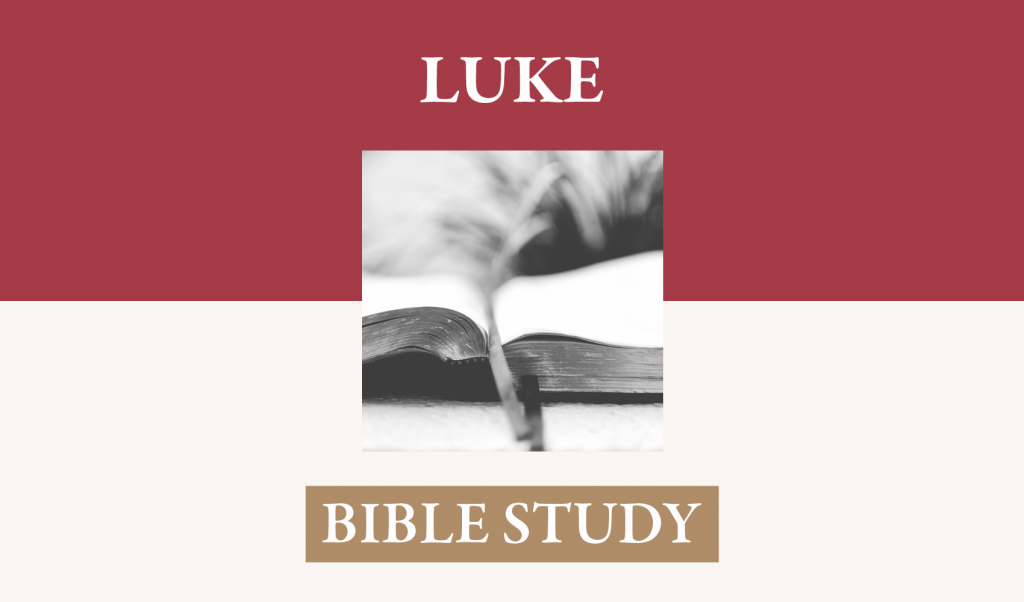I. Introduction: A biographical parenthesis: Verses 40 and 52 serve as a parenthesis for the event Luke records here on the basis of eye-witness accounts, probably from Mary herself. This is a gripping and charming snapshop of an event in the life of Jesus. Under the inspiration of the Spirit of God, Luke discerned that some knowledge of the true human history of Jesus between his birth and his appearance at the Jordan was needed. John carries us into eternity in his pre-existence and handles the event of the incarnation by the rich words, “And the Word was made flesh and dwelt among us” (John 1:14). Mark begins with John the Baptist and the coming of Jesus to him to be baptized. Matthew relates Jesus genealogy back to Abraham while Luke relates it to Adam. Matthew records the traumatic events early in the life of Jesus with Herod the Great’s attempt to eliminate him and the flight into Egypt (Matthew 2:13-23) and their settlement at Nazareth.
II. Chronology of Events.
A. In verse 40, Luke summarizes the time from infancy to his arrival at responsible manhood. As a true human child, he “continued to grow and become strong.” Also, in his human learning, he was “increasing in wisdom,” and as a dependent creature we find that “the grace of God was on him.” This union of the human with the divine is among the greatest of the mysteries of redemptive revelation, but essential for God’s intention for salvation.
B. We learn that the family went each year, with uninterrupted regularity, to Passover in Jerusalem (41). This was one of the three feasts all males were required by the Law to attend. This one in particular is mentioned, for after twelve years of age, children were seen as responsible for keeping the Law. Later this gave rise to the celebration of “Bar Mitzvah,” the time of recognition as a son of the covenant. None before or ever after kept the Law with such perfection unto true righteousness as did this Passover celebrant.
C. Having stayed for the entire time of the festival, after seven or eight days they returned. The group seemed well acquainted with each other, for Mary and Joseph thought that Jesus was with friends or family. They traveled a day without his being in their company.
D. At the end of the first day of travel, they became aware, “He is missing!” They returned to Jerusalem to look for him, thus making the second day since they left.
E. The first day after their return, the third day since they left Jerusalem after the feast, they found him in the temple.
- Having gone to the feast with the sense of assuming a son’s responsibility to the Law, they found him in the temple discussing the Law with “the teachers.” As in his later public ministry, we find Jesus asking questions as well as answering questions (Luke 17:20; 18:18-23; 20:1-8; 20-44).
- Later in his ministry, Jesus’ answers combined with his penetrating questions would incite furious and murderous anger (Luke 13:17; 14:6; 15:1, 2; 16:14; 19:47).
- Jesus’ responsibility to the Law transcended anything that either his parents or those teachers could imagine, and, as he proved in every conversation and challenge afterwards his knowledge of and consent to the goodness and perfection of the Law formed the foundation of our salvation.
F. Mary was astonished at what she observed in his confidence in the midst of scholars and of their rapt interest in his clear perceptions of truth. She was upset, thinking that he had been thoughtless and purposely caused them distress (“Why have you treated us this way?”). Perhaps her anxiety arose from some degree of guilt in not being aware that he was not with them when they left Jerusalem. Some of it was an outflow of the perplexing mysteries that surrounded his birth and that the divine purpose for this child outstripped her ability to comprehend.
G. Jesus answered, disarming any idea that he had dishonored his parents, and returned with them to Nazareth, and continued the growth described in 40.
III. Culminating Event [46-49]
A. An event that transcends expectations and understanding:
- The boy not only asked hard questions (a thing of skill when it drives persons to consider views and interpretations not before considered) but gave astounding answers.
- The teachers “stood outside themselves” or lost their normal detachment and self-composure at the answers of the child; see Acts 9:21 for the same word used to describe the teachers –“Then all those who heard were amazed,” for Paul the persecutor was preaching the message he had formerly opposed.
- The parents, probably in viewing this scene, did not immediately interrupt it, but surveyed what was happening, and they were “amazed,” like seeing a supernatural event, a “wonder” of transcendent power cf. 2:18, 33 for amazement; see 8:56 for the same word at the parents’ response seeing their daughter given life after she had died.
- Their amazement is compounded by their lack of understanding.
B. Jesus identified God as his Father and the moral precedence of pleasing him and expanding the true knowledge of his purposes.
- Note Luke’s contrast between “your father and I,” and Jesus’s answer “My Father.” Jesus was aware of his eternal generation, that his true and eternal Father was indeed the first person of the Trinity, God the Father.
- “In the things of my Father” – Some translations say “My Father’s House” because of Luke’s focus on the Temple (the public ministry of Jesus begins and ends in the Temple). The things of the Father, however, are not done only in the Temple. We find him doing the things of his Father in the synagogues (4:14-16; 31-33), in Nazareth (“where he had been brought up”) and in Capernaum. In 5:1 he does the things of his Father at the Lake of Gennesaret. His was a message of truth that would lead to repentance and the events that would constitute reconciliation. These events show, nevertheless, that he knew he was here on mission from his Father.
- Jesus used the language of necessity – These are the first recorded words of Jesus:
- “Why is it that you were looking for me?” Should they not have known from the virginal conception, the heavenly assurances given on that occasion, his deliverance into Egypt to avoid the Herodian slaughter, and the early testimonies in the temple from Simeon and Anna that this kind of work was seamlessly integrated with his very purpose in being born? Why was this event anything that should bewilder you? We find a similar kind of statement in exclamatory form in 24:25, “O foolish men and slow of heart to believe in all that the prophets have spoken!”
- “Did you not know that I must be about my Father’s business?” This is the language of moral necessity—”must.” Never for a moment did Jesus lose his way in pursuit of the covenantal arrangements established in eternity that he had a people to save and all his words and movements were designed to accomplish that end. A. T. Robertson emphasized the certainty of Jesus’s messianic consciousness in contrast to the naturalistic biblical scholarship of his day.
IV. Christological Implications
A. This event reminds the reader of the amazingly complex issue of the person of Christ. He is God and conscious of his eternal Sonship. But the passage also clearly thrives on the reality of his human development. In verse 40 “the child continued to grow.” In verse 42 we find him at the age of twelve. Verse 43 refers to him as “the boy Jesus.” Verse 40 notes the increase in physical stature and cognition and understanding in the child. Also we learn his dependence on grace even as an unfallen, sinless person—“the grace of God was upon him.” These same things are reiterated in the years beyond this twelfth year as Jesus “kept increasing in wisdom and stature, and in favor with God and men.” Carefully read Hebrews 2:14-18 and Hebrews 5:7-9 to see how his redemptive work depended on his humanity—truly of one nature with us, tested in all points as we are tested, but without sin, and finally perfected in righteousness.
B. Again, we must emphasize his Messianic Consciousness. Jesus did not have to find himself, but knew from his earliest moment of consciousness of human individuality (and without any interruption in his deity) of his messianic character and calling. Irrefutable display of this reality came from the first moment of his public ministry (John 1:29-34). He revealed this truth to the Samaritans in an interview with an unsavory woman—John 4:26-“I who speak to you am he.”
C. He was conscious of sharing the Nature of God, or being of the same essence as the Father, truthfully presenting his word and his work.
- In Luke 10: 21, 22 we find a full expression of the reality that must have been the source of amazement in these days Jesus spent in the temple. “I thank you, Father, Lord of heaven and earth” Jesus began this prayer, and continued, “that you have hidden these things from the wise and prudent and revealed them to babes.” “All things have been delivered to me by my Father, and no one knows who the Son is except the Father, and who the Father is except the Son, and the one to whom the Son wills to reveal him.” The Father and the Son are fully known only to themselves reciprocally for they share a single essence of deity, infinite, eternal, and unchangeable. Only those to whom the Son reveals the Father know him in his redemptive intention for those whom he has given to the Son.
- In John 5:17-24 Jesus made a series of statements that proclaimed clearly that he was equal with God. His work was equal to and parallel with that of the Father; the Son is loved eternally and intrinsically by the Father so that all that the Son does perfectly reflects the love of the Father for the Son. The Son, like the Father, gives life to whom he will (21), and by eternal generation gives to the Son to have “life-in-himself” even as the Father does (26). All judgment is committed to the Son so that he will have the same honor as does the Father.
D. Jesus came to be subservient to the will of his Father.
- This involved covenantal faithfulness. When as the great shepherd of the sheep as well as the Lamb of God, Jesus shed the “blood of the eternal covenant,” the Father became the God of Peace to his elect. See Hebrews 13:20, 21.
- In Jesus we see the culmination of the prophetic ministry. In his flesh we see the glory, the grace, and the truth of God. In his words and his works he completely revealed and accomplished the Father’s will for us. In his sending of the Spirit to gift his apostles for preaching and teaching, he said all to them and through them that he was unable to do during the redemptive mission of his incarnation (John 15:26, 27; 16:12-15). In these final days, God has spoken to us through a Son (Hebrews 1:1-4).
- He attained perfect righteousness, living perfectly according to the law and joyfully obeying the positive command to die, the just for the unjust, even the death of the cross (Romans 5:18, 19).
V. Several issues that emerge from this passage should be applied to our consciences for great repentance and stronger pursuit of righteousness.
A. Taking a cue from the perplexity of Mary and Joseph, we see that even under the most advantageous conditions, we are dull of understanding and slow to learn the true glory of Jesus. We must concentrate more on him as the image of the invisible God and learn to cast aside idols that hinder an unobstructed view of his true glory (1 John 5:20, 21).
B. We must learn the necessity of truly humble discipleship. We are dependent on the grace of Jesus in coming, the grace of the Father in giving, and the grace of the Spirit in making us alive. Any taint of haughtiness about natural gifts or advanced spiritual insight is completely irrational and incommensurate with the measure of our sin and darkness when left to ourselves.
C. We should embrace the humble use of the means that God has placed before us and pray for their effectuality in granting insight and holiness. Luke emphasized the use of established means and godly habits (“every year” 41 cf. 1:8; 2:25, 37).




















